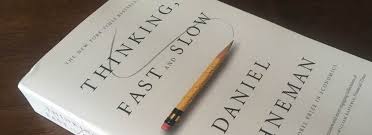
“Thinking Fast and Slow” is one of the bestselling books on behaviour, capturing the essence of the work that won Daniel Kahneman his Nobel prize for Economics (for more on his work on heuristics and biases, this long read has some depth on it: “You cannot eliminate your biases“
However, recently I was given something that really made me stop and think. I was emailing with Derek Sivers after writing about his latest book in my blog last week: “Say Yes to Less“. I then asked him to be a future guest on my weekly show WhatComesNextLive, then he asked me of the format.
I explained that I like to keep it simple and spontaneous for the guests to simply bring whatever comes to mind for them around the themes of What Comes Next and, in general, Leadership.
Derek confirmed he will be happy to be on the show later this year, then added: “P.S. I actually prefer to prepare 🙂 See: https://sive.rs/slow“.
This is a link to a chapter from his book “Hell Yeah or No”, and it is a reminder that we all process information differently and there is value to both thinking fast and to thinking slow. Do read that page, I found it very thought-provoking. One snippet:
“People say that your first reaction is the most honest, but I disagree. Your first reaction is usually outdated. Either it’s an answer you came up with long ago and now use instead of thinking, or it’s a knee-jerk emotional response to something in your past.”
It is a powerful reminder of a few things I’d been taught years ago about leading meetings, including a) give those who like time to think a day or two to cogitate, don’t press them for an answer, and b) always make sure to go to those who are taking their time and ask if they have any thoughts, don’t just go to those who answer fast and from instinct.
There is a richness in all styles of how we think.
